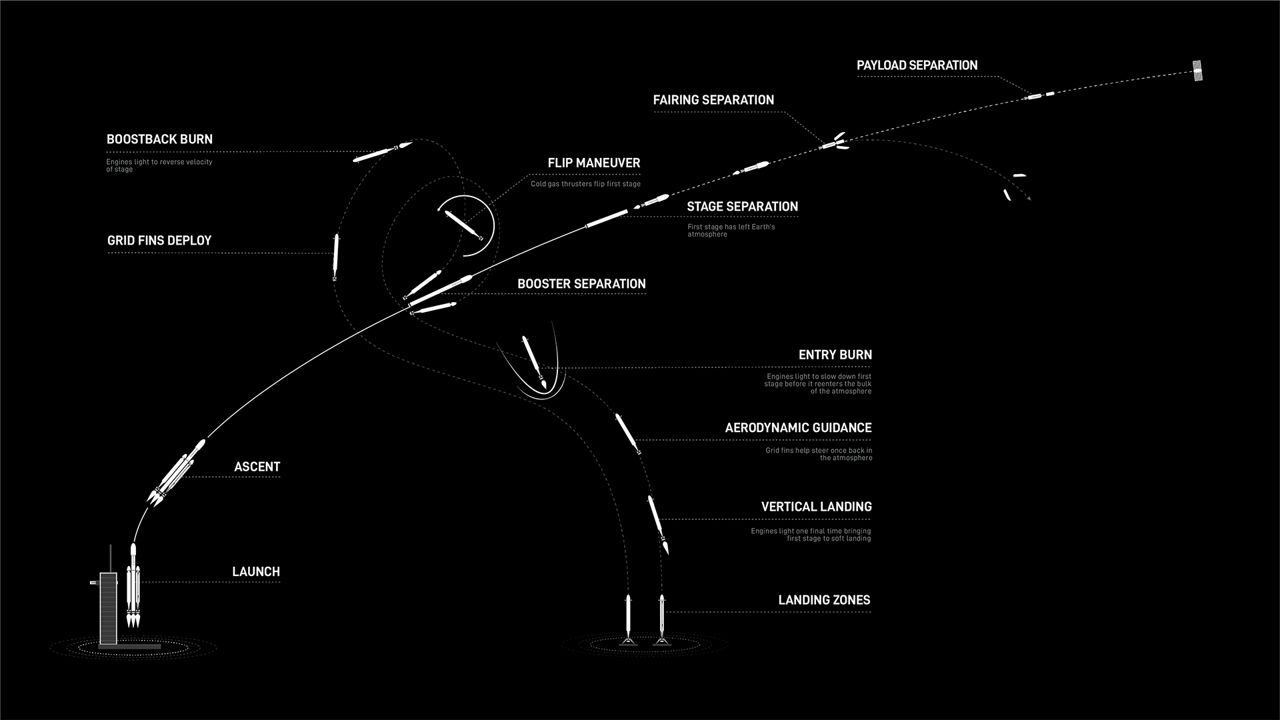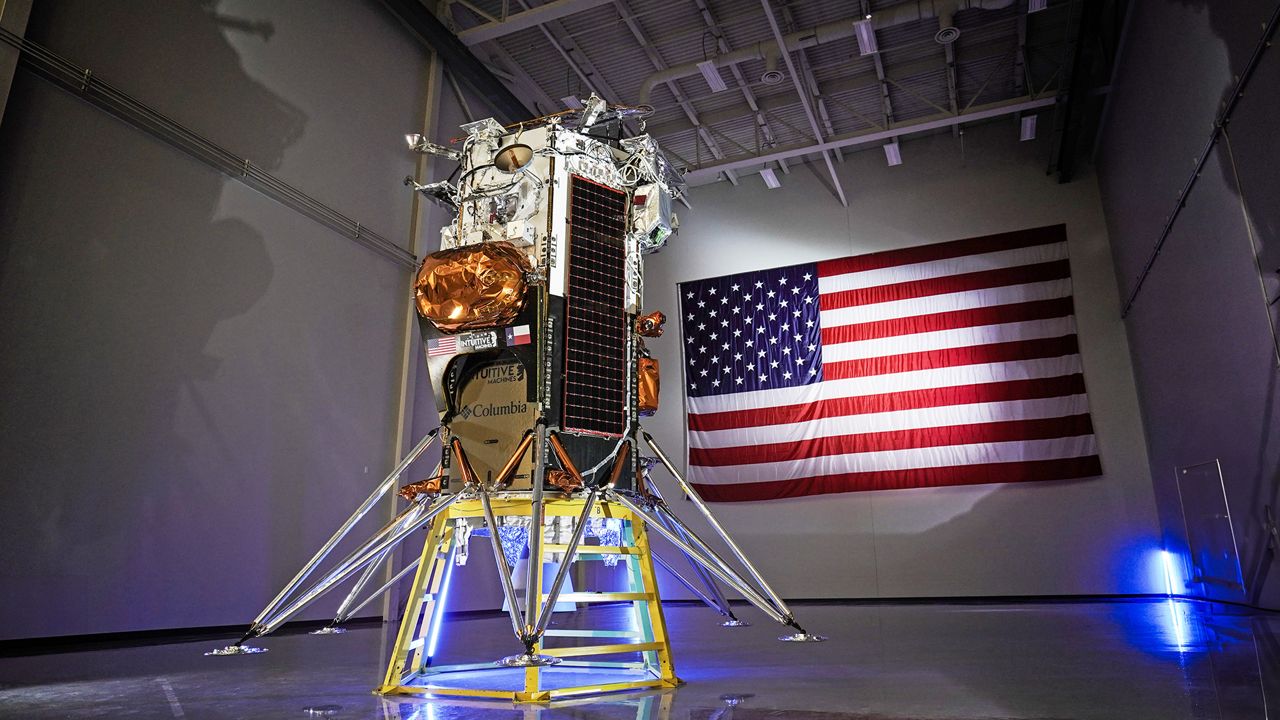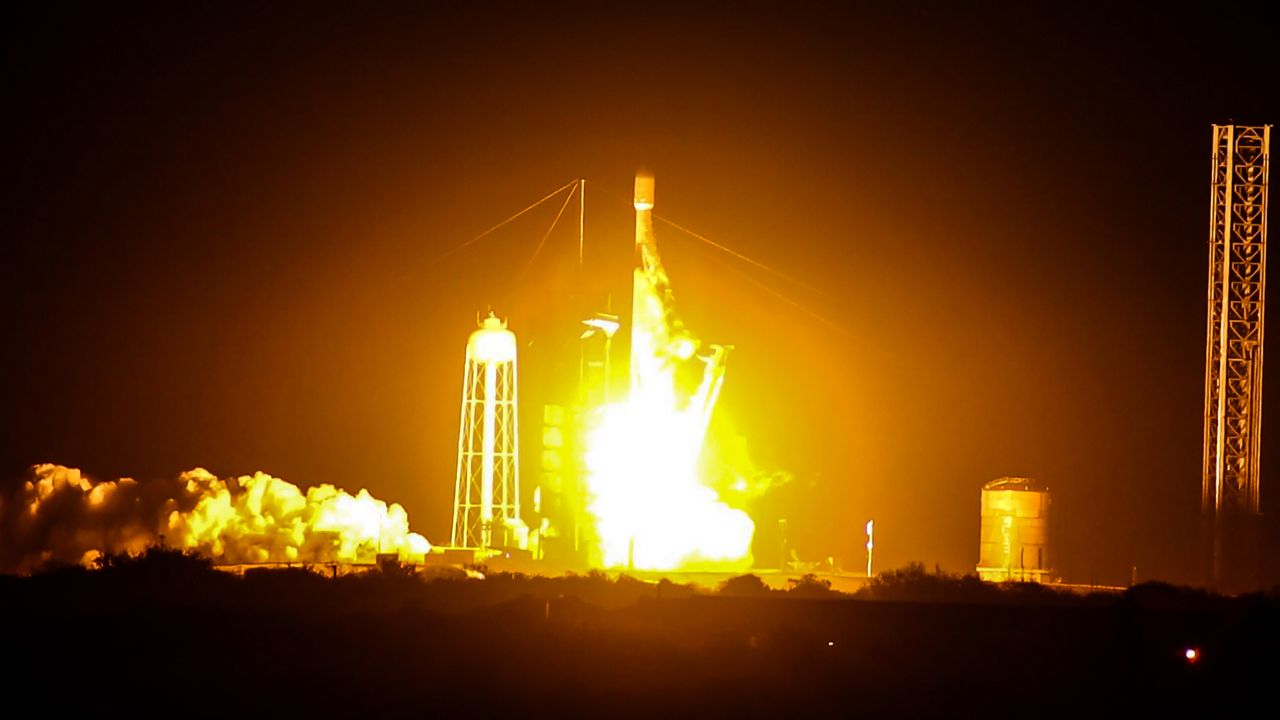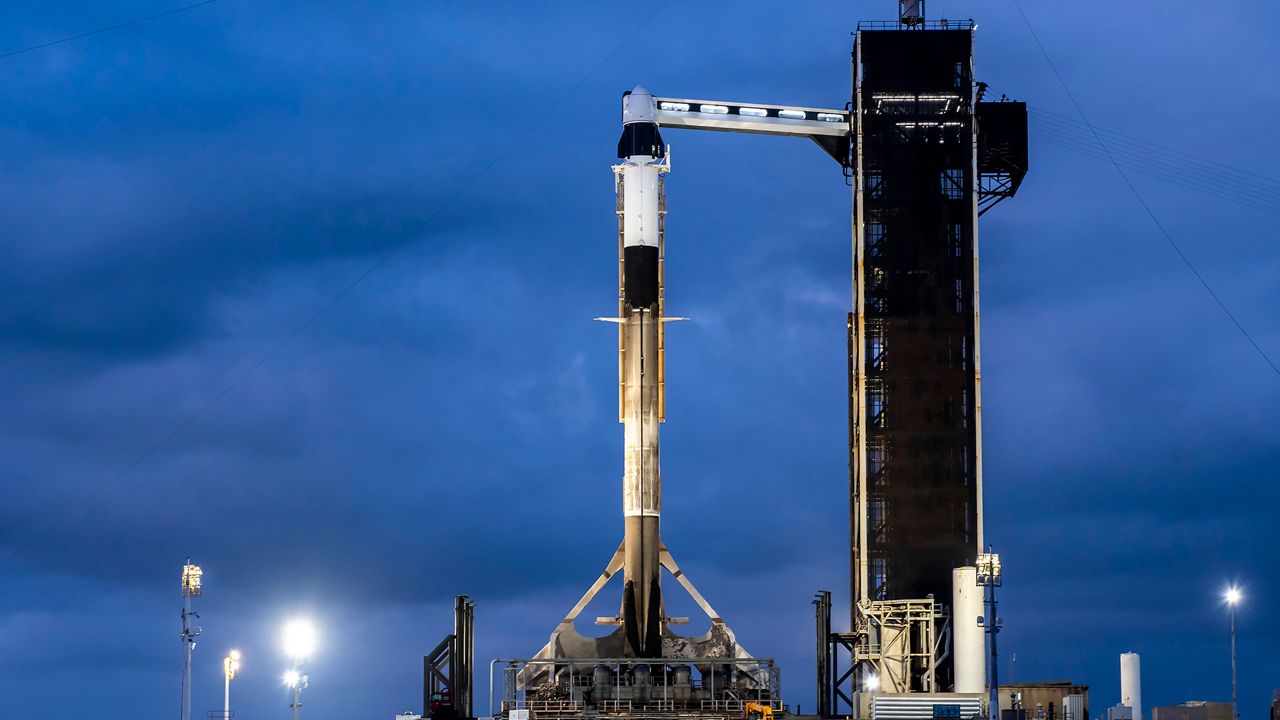KENNEDY SPACE CENTER — After scrubbing a Valentine’s Day launch, SpaceX was able to send up Intuitive Machines’ IM-1 mission early Thursday morning, with the hope that it will be the first private company to land on the moon.
What You Need To Know
- SpaceX’s Falcon 9 rocket sent Intuitive Machines’ Nova-C lunar lander to the moon
- The instantaneous launch was at Thursday, Feb. 15 at 1:05 a.m. ET
- The IM-1 mission left Launch Complex 39A at Kennedy Space Center
- Scroll down to learn more about the mission and the payloads going to the moon
- RELATED coverage: Intuitive Machines CEO: Space and moon is the next commercial endeavor
- Get more space coverage here ▶
- 🔻Scroll down to watch the launch🔻
Countdown to launch
🚀@SpaceX’s #Falcon9 rocket sent up @Int_Machines’ #NovaC #lunarlander!
— 🚀Anthony Leone🌕 (@AnthonyLeone) February 15, 2024
Find out what is being sent to the #moon in my article at @MyNews13: https://t.co/55yULMIE3g#SpaceX #IntuitiveMachines #Space #spacenews PT. 1 pic.twitter.com/r2Qj2z6D4G
With the roar of its powerful nine Merlin engines, SpaceX’s Falcon 9 rocket left right on time for its instantaneous launch at 1:05 a.m. ET from Launch Complex 39A at Kennedy Space Center, stated the company.
The Nova-C lunar lander, also named Odysseus, is now on its way to the moon.
For the early Thursday morning launch, the 45th Weather Squadron gave a 90% chance of good liftoff conditions, with the only concern being the thick cloud layer rule.
Go here to learn about NASA’s launch weather criteria for the Falcon 9 rocket.
The launch was originally set for Valentine’s Day but the mission was scrubbed late Tuesday night. According to SpaceX, the attempt was called off due to "off-nominal methane temperatures prior to stepping into methane load."
A big history for a little booster
The Falcon 9 first-stage booster, named B1060, is only 4 inches shy of 230 feet in height (70 meters), but it has an impressive 17 launches to its resume, not counting the IM-1 mission.
- GPS III-3
- Turksat 5A
- Transporter-2
- Transporter-6
- Intelsat G-33/G-34
- 12 Starlink missions
After the stage separation, the rocket landed on Landing Zone 1 at Cape Canaveral Space Force Station, with a thunderous sonic boom that was heard for miles around.
🚀And here goes the BOOM! @SpaceX’s #Falcon9 rocket came in for a landing as a sonic boom was heard!
— 🚀Anthony Leone🌕 (@AnthonyLeone) February 15, 2024
Find out what is being sent to the #moon in my article at @MyNews13: https://t.co/55yULMIE3g#IntuitiveMachines #SpaceX #SpaceNews PT. 2 pic.twitter.com/bSkLAD3xny

About the IM-1 mission

Intuitive Machines is hoping to be the first private commercial company to land on the moon with its lunar lander, the Nova-C.
The last time the U.S. was on the moon was in 1972 when Apollo 17 commander Eugene Cernan was the last human to set foot on it. If all goes according to plan, the Odysseus will be the first time the U.S. has been to the moon in more than 50 years.
The IM-1 Nova C lunar lander is 14 feet (4.3 meters) tall and weighs 1,488 pounds (675 kilograms). And it is packed with small payloads, like experiments and equipment, to be delivered to crater Malapert A, near the south pole of the moon.
These payloads are from NASA, private companies and Embry-Riddle Aeronautical University, as seen below in the graphic.
NASA is predicting that the Nova-C lunar lander will land on the moon next week.
“If launch occurs any time in the three-day window in February, the landing will take place on February 22. The lander is capable of operating for about 14 Earth days in sunlight,” the U.S. space agency stated.
The IM-1 landing sequence lasts approximately two minutes. Within that time, every heartbeat within our team resonates with the weight of anticipation as we strive to fulfill the lunar aspirations of an entire country. For more information and mission updates, visit our IM-1… pic.twitter.com/WHMoYNw2EV
— Intuitive Machines (@Int_Machines) February 11, 2024
Nilufar Ramji, NASA's lead public affairs officer, explained to Spectrum News about the importance of the IM-1 mission and how it will help with future Artemis missions.
🚀 @NASA’s Nilufar Ramji explained to me a bit about @Int_Machines’ #IM1 mission to send the lunar lander the #NovaC to the moon and how the mission will play a part in the #Artemis missions.
— 🚀Anthony Leone🌕 (@AnthonyLeone) February 15, 2024
Find out more about the IM-1 mission in my story at @MyNews13: https://t.co/55yULMIE3g pic.twitter.com/oLto1iSuCm
The IM-1 mission was originally set to be launched on Friday, Jan. 12, but Intuitive Machines stated it had to make an adjustment due to a change in SpaceX’s launch schedule.
Why space is the next big economic market
In a previous interview with Spectrum News, co-founder and CEO of Intuitive Machines Steve Altemus said that space is an evolution of a commercial market and not only is there an interest, but a need for it.
“Today, there are over a dozen landers being built, which is a new market, and because there were no lunar landers, there were no payloads or science instruments being commercially built for the moon. So, as we started to build our lunar program and offer services to fly commercial and civil equipment, instruments, and payload packages to the moon, the interest started,” Altemus stated.
The Houston-based Intuitive Machines was selected for the IM-1 mission as part of NASA’s Commercial Lunar Payload Services program. The company received $77.5 million for the contract.
The program allows NASA to work with various companies to deliver science, experiments and technology to Earth’s lunar sister.
Altemus stated that while there have been failures in reaching the moon for both space agencies and companies (such as Astrobotic’s Peregrine that suffered a fuel anomaly and ended up crashing back down to Earth), but he sees them as the first steps to getting it right.
“When we think about the moon and the chances of crashing on the surface of the Moon or on the way to the moon, I have to think about all of what has happened before us and how much success we create every day. Every day we move forward one step closer to pushing the boundaries of success of commercial flights to the moon and we are prepared,” Altemus explained.








